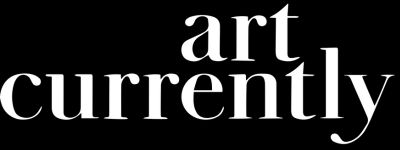Cantando Bajito: Incantations at The Ford Foundation Honors Feminized Bodies and Strategies of Resistance
_Ford Foundation Gallery_Cantando Bajito Incantations_Photo Sebastian Bach DSF0733.webp)
siren eun young jung, Public yet Private Archive (A Part), 2015/ 2024. Courtesy of the Artist and Ford Foundation Gallery. Photo Sebastian Bach.
The Ford Foundation Gallery opens its second iteration of Cantando Bajito: Incantations, part of a yearlong exhibition series that started in March focusing on strategies of resistance against hostile attacks towards bodily autonomy and feminized bodies. A continuation of the first chapter titled Testimonies, the second chapter, Incantations, brings together artists who offer multiple forms of support networks, care, and knowledge transmission.
These networks exist in several forms of expression, from written to verbal communication, however, the fundamental basis of this particular display is to create a tribute in honor of re-existence, a term coined by feminist activists of the Global South derived from their personal experiences.
Explained in the press release, “Incantations” features networks—symbolic systems, subversive spaces, or covert forms of language—as varied as the communities that develop them. They include Nüshu, a form of script passed from mother to daughter in China; the use of henna as an agent of protection; and forms of therapeutic communication that have been deemed “gossip.” All have long existed, whether in the shadows or in plain sight. Preserved not in written history but in the body, these channels prepare feminized bodies for potential violence while giving them tools to resist it. This exhibition, curated by Roxana Fabius, Kobe Ko, and Beya Othmani, celebrates these protective channels through artworks by Amina Agueznay, Seba Calfuqueo, IV Chan, Tamar Ettun, Serene Hui, siren eun young jung, Mônica Ventura, and Osías Yanov, which engage with or conjure such feminized spaces for transmitting support.
The idea is to create solidarity in places of violence and move beyond survival to other forms of existence. The artists depicted in the exhibit embody several forms of resistance and strategies for survival, with a good example being shown by Amina Agueznay’s Enfouissements (Acts of Burying) (2024), where coded messages were depicted in jewelry part of a traditional Moroccan wedding ceremony. This is supposed to embody both the erasure of gender-based violence and the covert resistance.
Another good example is Seba Calfuqueo’s video work MAPU KUFÜLL (Mariscos de tierra [hongos]) (MAPU KUFÜLL (LAND SEAFOOD [mushrooms])) (2020). This is on the mushroom foraging of the Mapuche people during their war with Chile in the 1880s. These forms of resistance highlight the true nature of this exhibit which can be inferred that the free will of a person cannot be tamed and suppressed and that their experiences not only define their sense of agency but also that these artworks define their sense of self which is constructed through what they went through.
On view through August 10, “Cantando Bajito: Incantations” is proudly presented by the Ford Foundation Gallery, which opened in 2019 and focuses on artworks related to the universal struggle for human dignity, justice, and survival. The three-part exhibition series Cantando Bajito is developed by curators Isis Awad, Roxana Fabius, Kobe Ko, Beya Othmani, Mindy Seu, and Susana Vargas Cervantes, with the advice of a larger curatorial group including María Carri, Maria Catarina Duncan, Zasha Colah, and Marie Hélène Pereira.


